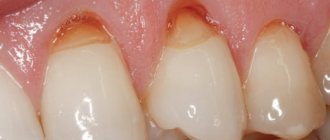- Published by: Laima Jansons
The appearance of any pigmentation on the lips should not be ignored . If a blue dot appears on the lip, even more so. Because this always indicates the presence of malfunctions in the body.
Interesting! Doctors distinguish between two main types of spots - youthful and senile. Both cases have their own characteristics and causes. Before starting treatment for a defect, you should understand what caused it to appear.
Possible causes of age spots
Among the main reasons that cause the appearance of unsightly age spots on the face are the following:
- Hereditary predisposition. Such spots include, for example, nevi, which are formed due to the uneven formation and distribution of melanin in skin cells. Most often they are beige or brown in color. Every person has a certain number of congenital age spots. However, if they begin to enlarge, become injured, or there are too many of them, this can lead to the development of cancer, and therefore such spots must be removed in a timely manner.
- Exposure to ultraviolet rays. Prolonged and heavy sun exposure often leads to the formation of age spots, such as freckles. This is due to excess melanin production when exposed to ultraviolet rays. In this case, it is possible to avoid the appearance of age spots if you use protective creams before sunbathing. This is perhaps the only reason that you can eliminate on your own, although consulting a good cosmetologist in this case will not be superfluous. Currently, there are a lot of drugs that can eliminate or “whiten” such age spots very quickly.
- Use of low-quality cosmetics and perfumes . The appearance of age spots is associated with exposure to harmful components that are part of such products and directly affect the skin. Treatment will be required here.
- Folic acid deficiency . Occurs in the body during certain diseases of the circulatory and immune systems. As a result, skin changes are observed, which are manifested by the appearance of age spots. Folic acid may be insufficiently supplied from food and may be observed in folate deficiency anemia, pregnancy and a number of other conditions. A lack of vitamin C and copper in the body can also cause the appearance of age spots.
- Age-related skin changes . They appear after 50 years and are signs of age. These spots are called lentigo spots. They occur in areas that are most frequently exposed to ultraviolet radiation, namely the face and hands. Their occurrence is associated with biological changes occurring in the skin; menopause and increased estrogen levels cause an increase in the number of such spots.
- Hormonal changes . They are one of the most common causes of age spots.
Very often, so-called chloasma occurs on the face, abdomen and around the nipples and genitals of pregnant women. The formations are characterized by a very specific location. For example, on the face they are usually on the bridge of the nose, temples, chin or upper lip, forming the so-called pregnancy mask. The reason for their appearance is a change in the general hormonal background, which means changes in the content of estrogen and progesterone, which, while expecting a baby, are present in a woman’s body in a different proportion than at normal times.
Chloasma that appears during pregnancy tends to disappear on its own after childbirth. Accordingly, no special therapy is required in this case. But to try to avoid their appearance, you should spend less time in the sun, eat healthy and balanced, and do not experiment with cosmetics. You can lubricate your face and other dangerous areas with special creams with a high content of folic acid, which are available in a wide range today.
Hormonal imbalances are observed not only in pregnant women. Fluctuations in the level of progesterone and estrogen, which occur during the normal physiological cycle in women, can also cause age spots on the face. This is called melanosis, in the formation of which an increase in the level of estrogen plays a significant role, which stimulates the formation of melanin. More often, this problem is typical for brunettes whose skin belongs to the fourth phototype. The spots that form in this case are uneven in shape and are located on the forehead, temples, cheeks, in the area of the upper lip and above the upper lip.
Taking oral contraceptives , as well as topical estrogen, can also cause spots to appear. The appearance of chloasma is accompanied by the onset of menopause. The reason for their occurrence also lies in the level of estrogen and an increase in the synthesis of pigments.
Many serious diseases are also accompanied by an increase in the level of estrogen in the blood and, as a result, the formation of age spots on the face. This may include:
- thyroid diseases that affect hormonal levels in the body;
- ovarian cysts and tumors;
- panhypopituitarism;
- pituitary tumors accompanied by increased production of estrogen;
- pathology of the adrenal glands;
- stress;
- obesity (estrogens are produced by adipose tissue);
- some diseases of the liver and gall bladder.
It is quite difficult to deal with spots that arise due to hormonal disorders. Sometimes it is not enough to identify and eliminate the causes that led to their formation, and in some cases it is difficult to completely get rid of the disease itself. In such a situation, women often resort to the help of cosmetologists to cope with the problem. However, if the underlying cause continues to adversely affect the body, the spots will appear again.
- Features of metabolic processes . Metabolism in the body is very important. Some diseases lead to its disruption. As a result, excess melanin production occurs and pigment spots form. Gallstone disease, hepatitis A, diseases that lead to impaired absorption of vitamins and minerals in the intestines can also cause the formation of age spots.
- Nervous disorders . Stress is, although not the most common, one of the reasons for the appearance of age spots.
Homeopathic medicines
The success of homeopathic treatment, first of all, lies in an individual approach to each patient. The homeopathic doctor prescribes a drug suitable for the constitutional type of the patient . In this case, the chosen remedy will affect the health of the body as a whole .
Depending on the type of stain on the lip and the patient’s psychotype, the following drugs may be prescribed:
- Arnica (Arnica montana). The drug promotes the resorption of compactions and is used to treat warts and venous nodules on the lips. The constitutional type of Arnica is full-blooded, good-natured people. Most often they are friendly, but during illness they become moody and irritable.
- Calcarea fluorica. Effectively fights vascular tumors, increases the tone of capillaries and blood vessels, and helps in case of helminthic infestation. Prescribed to patients with malocclusion and severe asymmetry of the bone skeleton.
- Silicea . The product effectively fights papillomas and helps eliminate hyperpigmentation on the lips. Psychotype - thin, sickly people who tend to get nervous over trifles. They often freeze and do not tolerate mental stress well.
- Phosphorus (Phosphorus). The drug is prescribed if the appearance of defects on the lips is caused by dysfunction of the liver and adrenal glands. The constitutional type of the drug is tall, stooped people with soft blond hair. The character is sensitive, touchy and vulnerable.
- Bellis perennis. The drug fights the manifestations of excessive pigmentation on the lips and has whitening properties. Most often prescribed to older people who complain of constant fatigue and memory problems.
The popularity of homeopathic treatment is primarily due to the proven effectiveness of the drugs . In addition, the absence of side effects that often occur when using traditional medications can be considered a big plus. Any drug is prescribed individually by a homeopathic doctor , therefore, when a blue dot appears on the lip, consultation with a specialist will be the first step towards a successful cure.
Treatment
Age spots are not an independent disease, but a symptom. Therefore, before treating pigment spots that have arisen, it is necessary to find out the cause of their formation, and for this you will have to undergo examination by a gynecologist, endocrinologist, gastroenterologist and neurologist. Treatment begins with treating the underlying disease, and only then does it make sense to begin to discolor spots and eliminate skin defects.
Among the methods for eliminating age spots, the following are currently widely used:
- laser removal. This is one of the most effective and harmless ways to get rid of age spots.
- chemical peeling, which is effective only on superficial stains;
- photoremoval (photorejuvenation);
The treatment option must be determined by the doctor, since only a specialist can, taking into account the characteristics of the skin and the condition of the patient’s body, identify all possible contraindications.
Find out the cost
When to worry
If bluish spots or dots appear on the lips, it is necessary to establish the cause of this symptom. If the cause is trauma, biting or other negative factors, the problem usually goes away on its own within a few days.
If the symptoms do not go away, the spots increase in size, pain and other alarming signs appear, you should not ignore them. It's better to see a doctor.
The discussion of the results
During the study, doctors studied data from clinical observation and histological analysis of 41 patients with genital melanosis. In 22 patients, the formations had several colors; in 11 patients they were more than 1.5 cm.
Researchers considered the average age of onset of this condition to be one of the clinical signs of benign genital melanosis. Among the study participants, it was 41 years. Genital melanoma develops on average in the sixth decade of life.
The researchers concluded that it is necessary to avoid unnecessary surgical intervention for genital melanosis. Clinicians consider it necessary to excise and send for histological examination all formations that seem suspicious to them. In the case of genital melanosis, this approach is not necessary. Most of the lesions examined during the study with clinical atypia, such as multiple colors and larger than 1.5 cm in size, were found to be benign.
Excisional biopsy in the genital area not only causes discomfort for the patient. The operation can harm sexual health and disrupt urinary function. The cosmetic result of the operation may be unfavorable.
Researchers have found that in most cases of genital melanosis, it is sufficient to actively monitor patients. Only one of the 41 study participants had both genital melanosis and genital melanoma. In this patient, genital melanosis was discovered almost 11 years after the diagnosis of vulvar melanoma. The formation was excised, and according to the results of histological examination it was recognized as benign.
During 30.5 months of follow-up, none of the study participants developed genital melanoma due to genital melanosis. In 19 patients who came for examination, the formations stabilized, decreased or disappeared. One patient was diagnosed with recurrence of genital melanosis after excision of the lesion.
Based on these data, the researchers concluded that the risk of genital melanosis transforming into melanoma is so small that it is difficult to measure.
The incidence of genital melanosis in the population is unknown. According to studies [1, 2], this condition occurs in 0.011% of patients who come to see a dermatologist. The incidence of genital melanoma is 0.19 cases per 1 million men and 1.8 cases per 1 million women. [4]
The study found that 15% of the experiment participants had a history of melanoma. In only one out of five cases the tumor was found in the genital area. The average age of patients with melanoma was 39 years.
Scientists have confirmed an increased incidence of genital melanosis in patients with a history of melanoma. Such patients have a suprabasal distribution of melanocytes, as well as an increased number of melanocytes in the epidermis.
Genital melanosis with clinical signs of atypia is recognized as an indication for active monitoring of patients, including examination of the whole body with a dermatoscope. However, according to the study, genital melanosis cannot be considered a precursor to genital melanoma. Therefore, in most cases, in patients with genital melanosis, radical surgery with excision of formations is not indicated.
The influence of hormones on skin pigmentation
According to the free radical theory of melanogenesis, due to a lack of antioxidants, mitochondrial DNA in some areas is damaged. The skin is hormone-dependent, that is, even minor hormonal imbalances affect its condition. Many functions of the skin - mitotic activity of the epidermis, activity of pilosebaceous follicles, hair growth, etc. – are directly influenced by hormones, in particular sex hormones. Therefore, about 30% of women using combined oral contraceptives are affected by melanosis. However, stopping medication does not always lead to the disappearance of hyperpigmentation.
Hormones such as adrenocorticotropic, somatotropic and thyroid-stimulating hormones also affect melanogenesis. Scientists note that hormonally caused dyschromia is less susceptible to therapeutic effects than pigmentation resulting from exposure to sunlight or inflammatory processes.
Methods
The study involved 41 patients with genital melanosis. The criterion for participation was the presence of a mass larger than 1 cm or multiple associated lesions whose total size exceeded 1 cm.
The patients were divided into two groups according to the size of the formation. The first included participants with formations larger than 1.5 cm, the second included participants with formations less than 1.5 cm.
Biopsies were performed in 35 of the 41 patients. During the histological examination, pathologists assessed, among other things, the following data:
- The number of melanocytes per square millimeter of the epidermis.
- Presence of nuclear atypia.
- Location of melanocytes in the epidermis.
Five patients were biopsied multiple times. Samples with the highest number of melanocytes per square millimeter of epidermis were used for overall statistical analysis.










